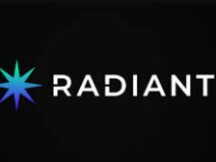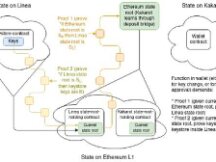Multichain and cross-chain are the future
Vitalik recently noted "significant restrictions on bridge safety in several 'sovereign' regions" and said that in the future there will be more chains and he is surprised at the use of chains.
In our opinion, Buterin asked good questions but made bad decisions. The need for a bridge connecting different "mass regions" cannot be ignored, as "land masses" may have security issues, not to mention the fact that now "sovereign lands" cannot solve their own security problems. security. This is a problem that ignores the future of the cross chain.
is,Cross-chain is an important part of current and future blockchain technology.
As Vitalik points out, “There really are independent communities with different interests, and it's better to follow each other's feelings than to fight for the same impact. 'Therefore, the existence and development of multi-channel is inevitable. Not only is this a prediction for the future, but the development of the current blockchain system shows a preference for multiple chains simultaneously, with different chains showing differences in technology choices, industry models, and community organizations. However, from the point of view of development and the notion of economy, if a community wants to develop and grow more, it cannot remain in its own right as a political fence. It will become an external resource for the further development of various blockchain communities or “one-stop-shop zones”, so it is important to create the link in the chain for the development of the blockchain. .
2. All security issues that arise in the "sovereign domain" must be resolved in the "sovereign domain".
The basic principle for the design and operation of computer and network systems is layering and modularity. Problems arising in the “sovereign domain” must be resolved in the “sovereign domain”. If the "sovereign domain" could not solve its own problem, this problem would spread to a greater extent, but it is not an interconnection problem, which still exists in the ecology of the public channel or " sovereign domain ".
Built in a fully decentralized state, blockchain systems have evolved from simple chains to complex ecosystems with hundreds of applications. The security of every system and application, whether in the chain or in the chain, includes the notion of reflection, responsibility and financial manipulation. Thus, the security of blockchain systems and applications is dynamically balanced and depends on the state and scenario in which other systems and applications exist. If there is a safety issue in the lower chain, high-end applications may also be affected by the safety issue. According to this logic, top-level applications should not be confined to the keychain, and data and assets should not interfere with the keychain.
3. Security problems that may arise in the "sovereign domain" can also be raised outside the "sovereign domain".
Vitalik cited the 51% attack on Ethereum as an example and said: "If Ethereum is attacked at 51% and comes back, Arbitrum and Optimism will come back, so even if Ethereum is attacked at 51%, the application" cross-rollup "is guaranteed. Yes." The question is, if Ethereum can recover from 51% of attacks, why can't the bridge chain recover? After 51% resistance is just a hard fork, the impact of base chain low curve or chain application cannot be estimated. bridged failure between chains, interconnection link, etc. Creating a larger "ecosystem" in the bridge chain ecosystem can solve this problem, which again is building a larger ecosystem, and how to solve the development problem. of the greatest.
As an independent, the Bitcoin system not only requires users to register for exchanges, but also requires parties to identify the content of each asset, past and present, during business hours. If really needed, chain links can also be used to analyze data between chains and assets during design and assembly. However, it does not waste business time and uses a lot of resources.
Vitalik also writes that “51% will not fight ETHereum to steal 100 Solana-WETH (or for that 51% will fight Solana to steal 100 Ethereum-WSOL). Large and large mining pools are a viable option. For attacks.” C 'is very true and no one will do 51% against Ethereum To steal 100 Solana-WETH but one person will attack Ethereum over 1,000,000 ETH In this case Ethereum and other public channels A climate threat posed by ecosystems or " hot places ". no need to be smaller than a chain of crosses, because a lot of treasures are encased in strings of pearls, that is. We cannot say that the pearls will be more dangerous.
The global blockchain of the future will inevitably become a more interconnected world, and each chain will continue to have its own ecosystem. However, external development is essential to avoid not only all applications in the chain, but also all consumer products. Creating an ecosystem that only develops internally and is closed for security reasons will only undermine its own ecosystem and reduce competition. In the long term, it is not conducive to the development of each chain ecosystem, and it is not conducive to the development of blockchain or the future metaverse.

Scan QR code with WeChat






























